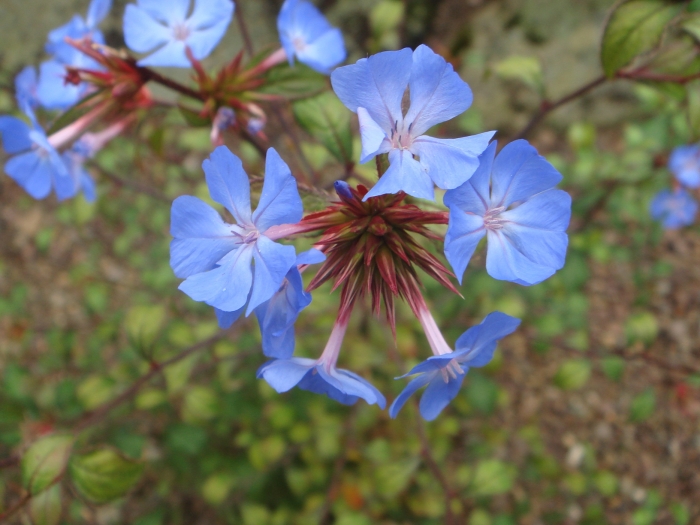Dwarf Plumbago
(Ceratostigma minus)
Dwarf Plumbago (Ceratostigma minus)
/
/

Xemenendura
CC BY-SA 4.0
Image By:
Xemenendura
Recorded By:
Copyright:
CC BY-SA 4.0
Copyright Notice:
Photo by: Xemenendura | License Type: CC BY-SA 4.0 | License URL: https://creativecommons.org/licenses/by-sa/3.0 | Uploader: Xemenendura | Publisher: Wikimedia Commons |





Estimated Native Range
Summary
Ceratostigma plumbaginoides, commonly known as Dwarf Plumbago, is a deciduous perennial herb native to Western China and the Himalayas, including regions such as Tibet. It typically grows to a height and width of 2-3 feet (0.6-0.9 meters), forming a dense, mounded ground cover. Dwarf Plumbago thrives in rocky outcrops and slopes in its native habitat, where it is adapted to well-drained soils and periodic drought.
Dwarf Plumbago is valued for its vibrant blue flowers that bloom from late summer to autumn, adding a splash of color to the garden when many other plants are fading. The foliage also provides seasonal interest, turning a striking bronze-red in the fall. It is commonly used in rock gardens, as a ground cover, and in border fronts due to its low maintenance and spreading habit. This plant prefers full sun to part shade and requires well-drained soil with moderate moisture, though it is drought-tolerant once established. While generally disease-free, it can suffer from root rot in poorly drained soils.CC BY-SA 4.0
Dwarf Plumbago is valued for its vibrant blue flowers that bloom from late summer to autumn, adding a splash of color to the garden when many other plants are fading. The foliage also provides seasonal interest, turning a striking bronze-red in the fall. It is commonly used in rock gardens, as a ground cover, and in border fronts due to its low maintenance and spreading habit. This plant prefers full sun to part shade and requires well-drained soil with moderate moisture, though it is drought-tolerant once established. While generally disease-free, it can suffer from root rot in poorly drained soils.CC BY-SA 4.0
Plant Description
- Plant Type: Shrub
- Height: 2-3 feet
- Width: 2-3 feet
- Growth Rate: Moderate
- Flower Color: Blue
- Flowering Season: Summer, Fall
- Leaf Retention: Deciduous
Growth Requirements
- Sun: Full Sun, Part Shade
- Water: Medium, High
- Drainage: Medium
Common Uses
Bee Garden, Bird Garden, Butterfly Garden, Deer Resistant, Groundcover, Hummingbird Garden, Low Maintenance, Showy Flowers
Natural Habitat
Western China and the Himalayas, including rocky outcrops and slopes
Other Names
Common Names: Leadwort
Scientific Names: , Ceratostigma minus,
GBIF Accepted Name: Ceratostigma minus Stapf ex Prain